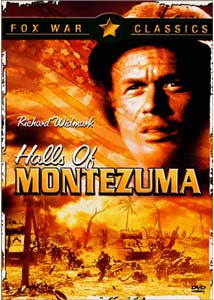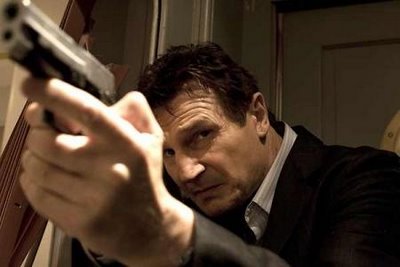 Completely out of the blue this week, I went and saw Terminator Salvation with a bunch of family. Actually we bought tickets for Star Trek, but that's a different story. I've seen the first 3 Terminator movies so I knew the story and the background, and maybe most importantly, I've listened to star Christian Bale's on-set rant. That will always be entertaining. I'm kind of in the middle when it comes to Bale. I think he's a really good actor, loved him in 3:10 to Yuma, The Machinist, and Rescue Dawn, but I don't necessarily like him.
Completely out of the blue this week, I went and saw Terminator Salvation with a bunch of family. Actually we bought tickets for Star Trek, but that's a different story. I've seen the first 3 Terminator movies so I knew the story and the background, and maybe most importantly, I've listened to star Christian Bale's on-set rant. That will always be entertaining. I'm kind of in the middle when it comes to Bale. I think he's a really good actor, loved him in 3:10 to Yuma, The Machinist, and Rescue Dawn, but I don't necessarily like him.And as you look at the previews, trailers, posters and commercials, this movie is presented as Bale's movie, the beginning of the next round of Terminator moves. Bale plays John Connor, the rising leader of the resistance battling Skynet in the post-apocalyptic 2018 United States. For three movies, all we heard about was how John was this great, charismatic leader who must survive to lead the resistance. I hated Edward Furlong in T2, and Nick Stahl was all right in T3 so the precedent isn't that great. We're supposed to believe this character is the savior of mankind, but been given nothing to believe why. John Connor, initials J.C., get it?
It's odd then so much of this movie is spent on other storylines. My guess? Bale's only in about half of the movie's 115 minute running time. As John, he's okay, but it's not his best part. By far, this movie belongs to scene-stealing Sam Worthington as Marcus Wright, maybe the coolest character I've seen in a movie since Tyler Durden. A brief opening scene in 2003 shows Marcus on Death Row, signing a waiver for Dr. Serena Kogan (Helena Bonham Carter, great in a small part) to donate his body to science. Flash forward to 2018 where after a disastrous patrol where only John survives, a man, Marcus, walks out of the rubble. He has a mission, an objective, but even he himself doesn't quite know what it is.
If you've seen the trailer or any number of previews, you know Marcus' secret, but I won't blow it here. I will say his character's turmoil gives the movie some heart, even some depth. As the series looks ahead, and yes, the ending leaves a big opening for more movies, I certainly hope Marcus Wright is included somehow, even more so than John Connor. That's what surprised me about the movie in general, the supporting cast steals the movie. Also worth mentioning are Moon Bloodgood as Blair Williams, a resistance pilot who meets Marcus and believes he can help the effort, Anton Yelchin as Kyle Reese, a young man who will one day become John's father, Bryce Dallas Howard as Kate, John's pregnant wife (formerly played by Claire Danes) and Jadagrace as Star, Kyle's mute traveling partner. And just cause they're cool and generally badasses, Michael Ironside plays a resistance general and rapper Common as Barnes, one of John's men.
Now by this point maybe you're wondering why I even saw the movie. The movie is just there without a lot of reason to get involved. It's not bland, but it's close with some to all of the blame going to director McG. All other things aside, the action scenes are top-notch as John, Marcus, Kyle and Co. battle any number of Terminators. The post-apocalyptic setting in California gives the movie quite a unique look too, like a lot of westerns with the lone gunfighter trying to survive.
Maybe because this story has only been talked about in the previous three movies, with an occasional flashback or flashforward I guess, but T-Salvation didn't quite feel like a Terminator movie. It's a good action movie, but other than the names and some nods to fans of the series, it could have been a stand-alone movie. The Terminators are nameless, just metal robots trying to kill John and Kyle. The Governator himself, Arnold, makes a quasi-appearance but it's so badly done CGI that it's distracting. Other touches gone horribly wrong, the delivery midway through the movie of Arnold's famous line "I'll be back." SSsssssssssssssoooooo bad, so cheesy. I would recommend seeing the first 3 movies before Salvation though. It will definitely help you understand and clear up the storyline here. You might be lost otherwise.
Still, I liked the movie despite its flaws. As I said, the action and chase scenes are good on a big and little level, you care for most of the characters on the small level and the epicness of some of the attacks is cool to watch. Here's an official trailer for T-Salvation that hopefully convinces you to go see the movie, it's one of the more effective trailers I've watched in awhile. And one more push to get you to go see this one...Transformers 2 trailer runs in front of it. If Megan Fox sprawled across another car doesn't convince you to go, I'm out of ideas. You're on your own.












